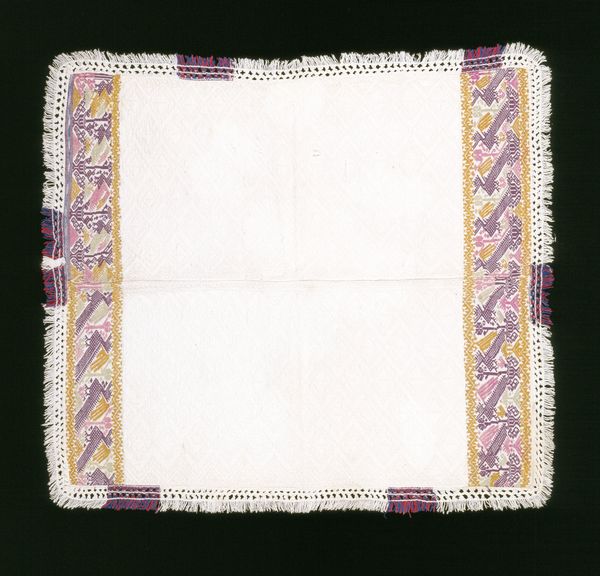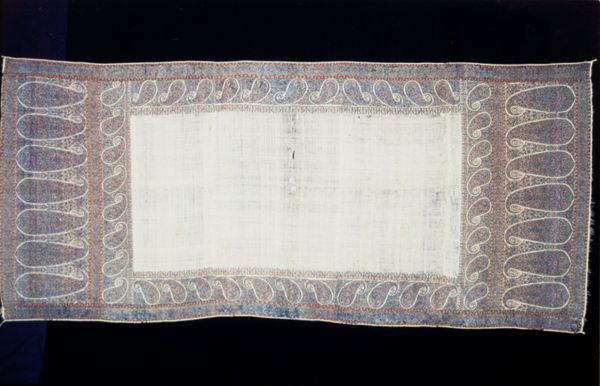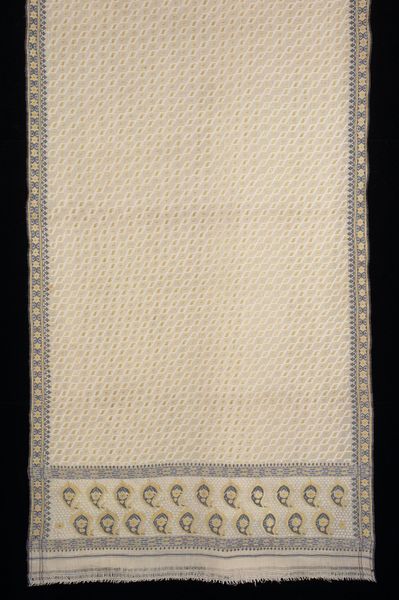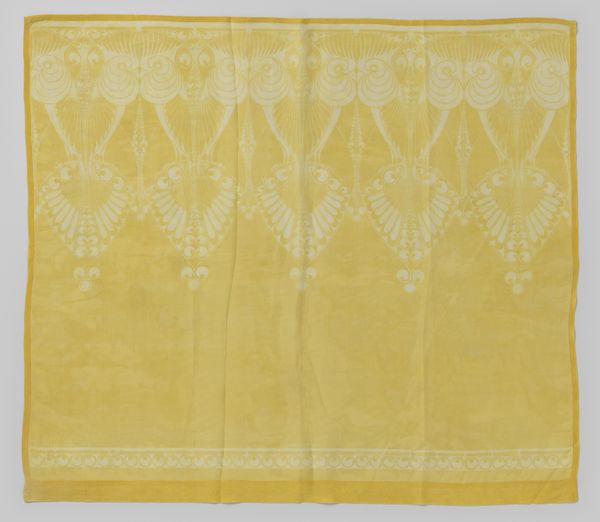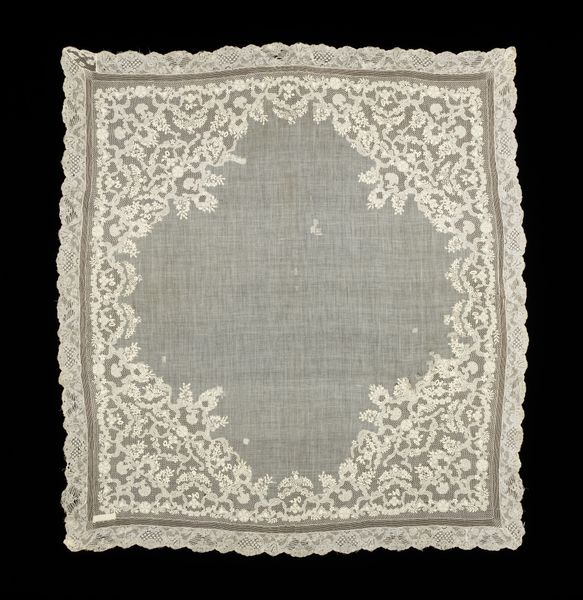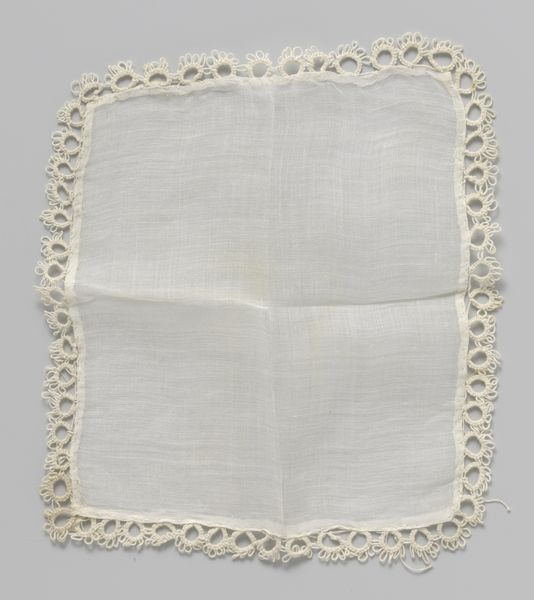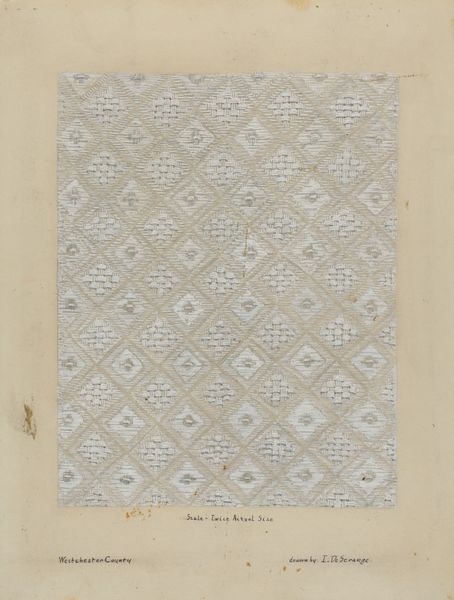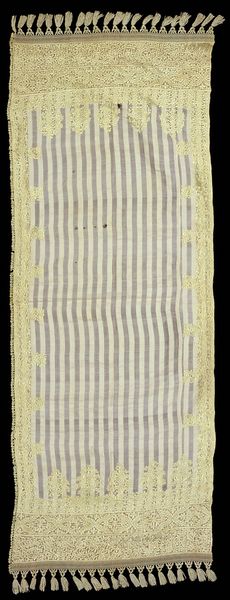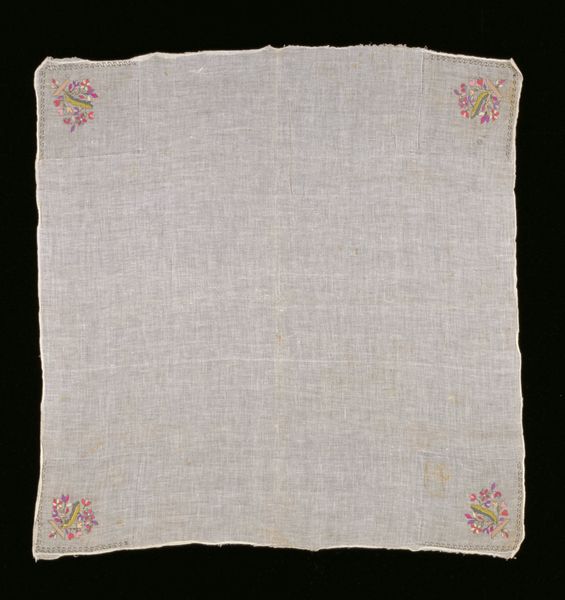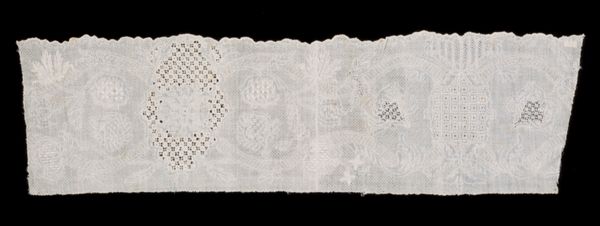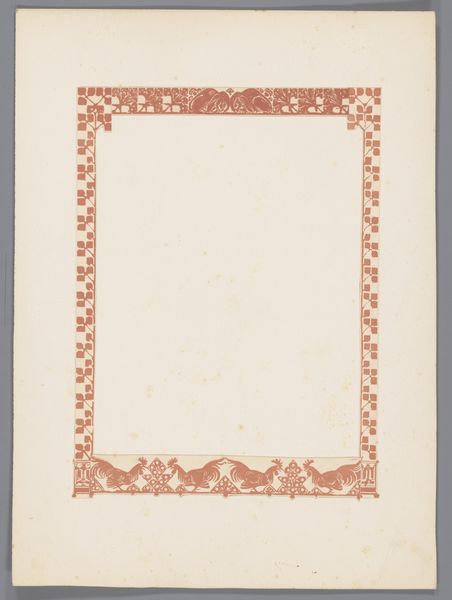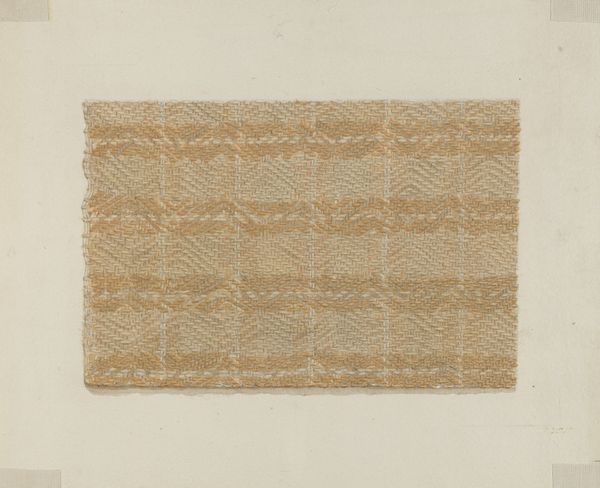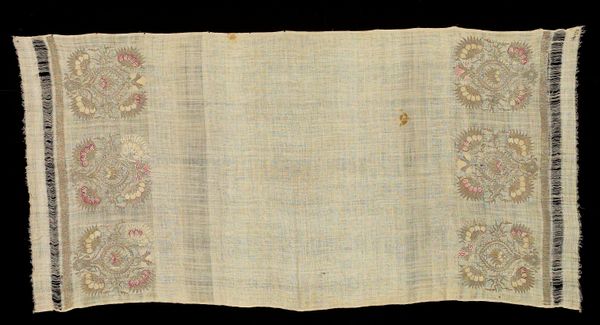
textile
#
textile
#
pattern design
#
repetition of pattern
#
textile design
#
decorative-art
Dimensions: 110 x 57 in. (279.4 x 144.78 cm)
Copyright: Public Domain
Editor: This is an intriguing 19th-century textile, simply titled "Shawl," currently at the Minneapolis Institute of Art. The material design is eye-catching, with those repeated paisley motifs and clean central space. What can you tell me about it? Curator: It's crucial to consider the conditions under which this shawl was produced. The uniformity of the pattern, while aesthetically pleasing, points to the mechanization of textile production. Were these made by hand? Where? How were these made by artisans? If so, we need to question if we are romanticizing craft while ignoring labor exploitation. Editor: I hadn't thought of it that way. The detail made me assume a hand-crafted origin, not the result of industrial manufacture. Curator: Indeed. Shawls like these often masked the true nature of their production behind a veneer of elegance and exoticism, obscuring the reality of factory labor and global trade networks. Considering the social context helps unveil the intricate story woven into this textile. It also appears to have some level of bleaching on what would have probably been a darker material; where did they get these resources? Were these people contributing to colonization by demanding resources from afar? Editor: That makes me see the shawl in a totally new light. Instead of a pretty object, it is also a testament to the socio-economic context from which it came. So, how would this knowledge reshape my viewing of decorative arts moving forward? Curator: Now, every material becomes a point of inquiry. What is this made of, where, by who? Thinking about things as simple as dye can tell the true, material origin. Editor: I’ll definitely approach these kinds of pieces with more critical curiosity now. Thanks for sharing your insights.
Comments
No comments
Be the first to comment and join the conversation on the ultimate creative platform.
